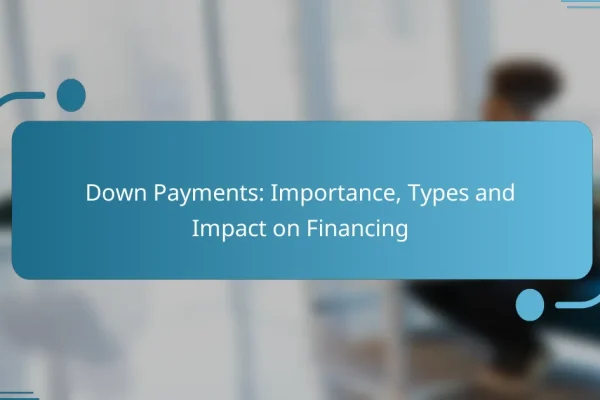
Closing Costs: Breakdown, Estimates and Negotiation Tips for Buyers
Understanding closing costs is essential for home buyers, as these expenses typically range from 2%…
The Los Angeles real estate market is undergoing notable transformations, with rising home prices and a growing interest in suburban living driven by remote work trends. Factors such as population growth, low mortgage rates, and substantial tech investments are shaping property demand and pricing. When selecting a neighborhood, it's essential to consider aspects like school districts, amenities, and safety to ensure a fulfilling living experience.

Understanding closing costs is essential for home buyers, as these expenses typically range from 2% to 5% of the home’s purchase price. These costs encompass various fees necessary to complete the transaction and transfer ownership. By estimating potential expenses and employing negotiation strategies, buyers can effectively manage and reduce their closing costs, leading to significant…

Location plays a pivotal role in real estate valuation, significantly influencing property desirability and market prices. Properties situated in sought-after areas often achieve higher values, while those in less favorable locations may face challenges in maintaining their worth. To optimize investment strategies, it is essential for investors to identify regions with growth potential and analyze…

Mortgage pre-approval is a vital step for homebuyers, especially in competitive markets, as it equips you with the necessary financial clarity and enhances your negotiating power. By gathering essential documents and securing a pre-approval letter, you can confidently shop for homes and make timely offers. Understanding the timing and market conditions can further optimize your…

Down payments play a vital role in home financing, impacting the loan amount, monthly payments, and overall financial health. By understanding the various types of down payments and their implications, borrowers can make informed decisions that lead to better loan terms and reduced costs over time. Why are down payments important in home financing? Down…

Real estate agents are invaluable allies for home buyers, providing expert guidance through the intricate process of purchasing property. They not only help clients navigate the local market and negotiate favorable terms but also offer access to exclusive listings and essential support in legal matters, ensuring a smooth and successful transaction. How do real estate…

Walkability plays a crucial role in enhancing public transport accessibility, making transit stations more reachable and convenient for urban residents. By fostering pedestrian-friendly environments, cities can encourage greater public transport use, leading to improved service efficiency and connectivity. Efficient public transport options, such as subways and light rail, further benefit walkable neighborhoods, creating a seamless…

The housing market is currently experiencing notable trends, including rising home prices and an increasing preference for suburban properties that support remote work. Seasonal patterns play a crucial role in shaping buyer behavior and transaction volumes, making it essential for participants to understand these dynamics. Additionally, economic factors such as interest rates and inflation significantly…

A credit score is a vital indicator of an individual’s creditworthiness in the United States, impacting access to various financial opportunities. By understanding how to improve this score through responsible financial habits, such as timely payments and prudent credit management, individuals can secure better loan options and favorable mortgage terms. Why is a credit score…

Economic factors such as interest rates, employment rates, and inflation play a crucial role in shaping financial landscapes and influencing consumer behavior. Changes in interest rates can affect borrowing costs and investment decisions, while rising employment rates often correlate with increased economic growth and consumer spending. Additionally, inflation impacts purchasing power, making it essential for…

FHA loans are designed to make homeownership more attainable for first-time buyers by offering benefits such as lower down payment requirements and flexible credit criteria. These loans help reduce the financial burden on new homeowners, allowing them to enter the housing market with greater ease. To qualify, borrowers must meet specific eligibility criteria, ensuring they…
The Los Angeles real estate market is currently experiencing significant changes, characterized by rising home prices, increased demand for suburban properties, and a shift towards housing that accommodates remote work. These trends reflect broader economic conditions and lifestyle preferences among buyers.
Home prices in Los Angeles have been on an upward trajectory, with many neighborhoods seeing increases in the low double digits annually. This trend is driven by limited inventory and strong buyer demand, particularly in desirable areas. As a result, potential buyers should be prepared for competitive bidding situations.
For instance, median home prices in sought-after neighborhoods can range from the mid hundreds of thousands to several million dollars. Buyers should consider setting a budget that allows for flexibility, as properties may sell quickly above asking prices.
There has been a noticeable shift in buyer interest towards suburban areas surrounding Los Angeles. Many individuals and families are seeking larger homes with outdoor space, which has led to increased demand in these regions. Suburban properties often offer more affordable options compared to urban centers.
Buyers should explore areas such as the San Fernando Valley or the Inland Empire, where homes typically provide more square footage and yard space for families. This trend indicates that buyers are prioritizing lifestyle changes and the need for more personal space.
The rise of remote work has influenced housing preferences in Los Angeles, with many buyers looking for homes that accommodate home offices or flexible workspaces. This shift has made properties with additional rooms or dedicated office spaces more appealing to potential buyers.
When searching for homes, buyers should consider properties that offer a quiet environment suitable for work, as well as reliable internet connectivity. This trend may also lead to increased interest in properties further from the city center, where larger homes can be found at more competitive prices.
The Los Angeles real estate market is primarily driven by population growth, low mortgage rates, and significant investments from tech companies. These factors create a dynamic environment that influences property demand and pricing trends.
Los Angeles has experienced steady population growth, which fuels demand for housing. As more people move to the area for job opportunities and lifestyle, the competition for available properties increases, often leading to higher prices.
In recent years, the population has grown by several hundred thousand residents, contributing to a tight housing market. This trend is expected to continue, making it essential for potential buyers to act quickly when they find suitable properties.
Low mortgage rates have made home buying more accessible for many individuals and families in Los Angeles. With rates often hovering around historic lows, buyers can secure favorable financing, which encourages more people to enter the market.
Even slight fluctuations in interest rates can significantly impact monthly payments and overall affordability. Buyers should monitor these rates closely and consider locking in a rate when they find a property that meets their needs.
Investment from tech companies has played a crucial role in shaping the Los Angeles real estate landscape. As major firms establish offices in the area, they attract a workforce that drives demand for housing, particularly in neighborhoods close to these tech hubs.
This influx of investment not only boosts property values but also leads to the development of new residential projects. Buyers should keep an eye on emerging neighborhoods that are benefiting from this trend, as they may offer promising opportunities for appreciation.
Choosing the right neighborhood in Los Angeles involves evaluating various factors that align with your lifestyle and needs. Key considerations include school districts, proximity to amenities, and safety, which can significantly impact your living experience and property value.
School districts play a crucial role in neighborhood selection, especially for families with children. Areas served by highly-rated public schools often see higher property values and demand. Research local school performance ratings and consider the availability of educational resources.
In Los Angeles, schools are ranked by various organizations, so it's beneficial to consult resources like GreatSchools or the California Department of Education for up-to-date information. Keep in mind that neighborhoods with strong school districts can command a premium in housing prices.
Proximity to amenities such as grocery stores, parks, restaurants, and public transportation can greatly enhance your quality of life. Living near essential services saves time and adds convenience to daily routines. Consider how far you are willing to travel for these amenities.
In Los Angeles, neighborhoods like Westwood and Silver Lake are known for their vibrant local amenities. A good rule of thumb is to prioritize neighborhoods where you can access key services within a short drive or a reasonable walking distance.
Safety is a top priority when selecting a neighborhood. Researching crime rates can provide insight into the safety of an area. Websites like NeighborhoodScout and local police department resources can offer detailed crime statistics and trends.
In Los Angeles, crime rates can vary significantly between neighborhoods. Generally, areas with lower crime rates tend to be more desirable, which can influence housing prices. Always consider visiting neighborhoods at different times of the day to get a feel for the environment and community safety.
The pricing trends for homes in Los Angeles indicate a generally upward trajectory, driven by high demand and limited inventory. Buyers can expect to see fluctuations based on neighborhood, property type, and market conditions.
In recent years, the median home price in Los Angeles has experienced significant increases, often reaching the high hundreds of thousands to low millions of dollars. This trend reflects a competitive market where desirable locations and amenities drive prices higher.
Potential buyers should be prepared for bidding wars, especially in sought-after neighborhoods. It is advisable to monitor local listings closely and act quickly when a suitable property becomes available.
The price per square foot for homes in Los Angeles varies widely, typically ranging from the low hundreds to over a thousand dollars, depending on the area. This metric helps buyers assess the value of a property relative to its size and location.
When evaluating homes, consider not just the total price but also the price per square foot to ensure you are making a sound investment. Comparing similar properties in the same neighborhood can provide valuable insights into whether a listing is priced fairly.
In Los Angeles, various financing options cater to different buyer needs, including conventional loans, FHA loans, and VA loans. Each option has unique requirements and benefits, making it essential to understand which best suits your financial situation.
Conventional loans are not insured or guaranteed by the government and typically require a higher credit score, often above 620. They usually demand a down payment of at least 3% to 20%, depending on the lender and the borrower's financial profile.
These loans can be either conforming or non-conforming, with conforming loans adhering to guidelines set by Fannie Mae and Freddie Mac. Borrowers should consider their long-term financial goals and whether they can manage the monthly payments associated with these loans.
FHA loans are backed by the Federal Housing Administration and are designed to help first-time homebuyers or those with lower credit scores. A minimum down payment of 3.5% is required, making them more accessible for many buyers in Los Angeles.
While FHA loans have lower credit requirements, they also come with mortgage insurance premiums, which can increase monthly payments. Buyers should weigh the benefits of lower upfront costs against the long-term costs of insurance.
VA loans are available to eligible veterans, active-duty service members, and certain members of the National Guard and Reserves. These loans require no down payment and do not require private mortgage insurance, making them a cost-effective option for those who qualify.
While VA loans offer favorable terms, borrowers must pay a funding fee, which can be financed into the loan. It's crucial for potential buyers to verify their eligibility and understand the benefits and responsibilities associated with VA loans in the Los Angeles market.
The best real estate agents in Los Angeles are those with a proven track record, strong local knowledge, and excellent client reviews. They understand the unique dynamics of the LA market and can guide buyers and sellers effectively through the process.
Top-rated agents in Los Angeles often have extensive experience and a solid reputation among clients. Many of them are recognized by industry awards and have high ratings on platforms like Zillow and Realtor.com. Look for agents who specialize in the neighborhoods you are interested in, as local expertise can significantly impact your real estate experience.
When selecting a top-rated agent, consider their communication style and availability. A good agent should be responsive and able to provide timely updates throughout the buying or selling process. Additionally, check their recent sales history to ensure they have successfully closed transactions similar to yours.